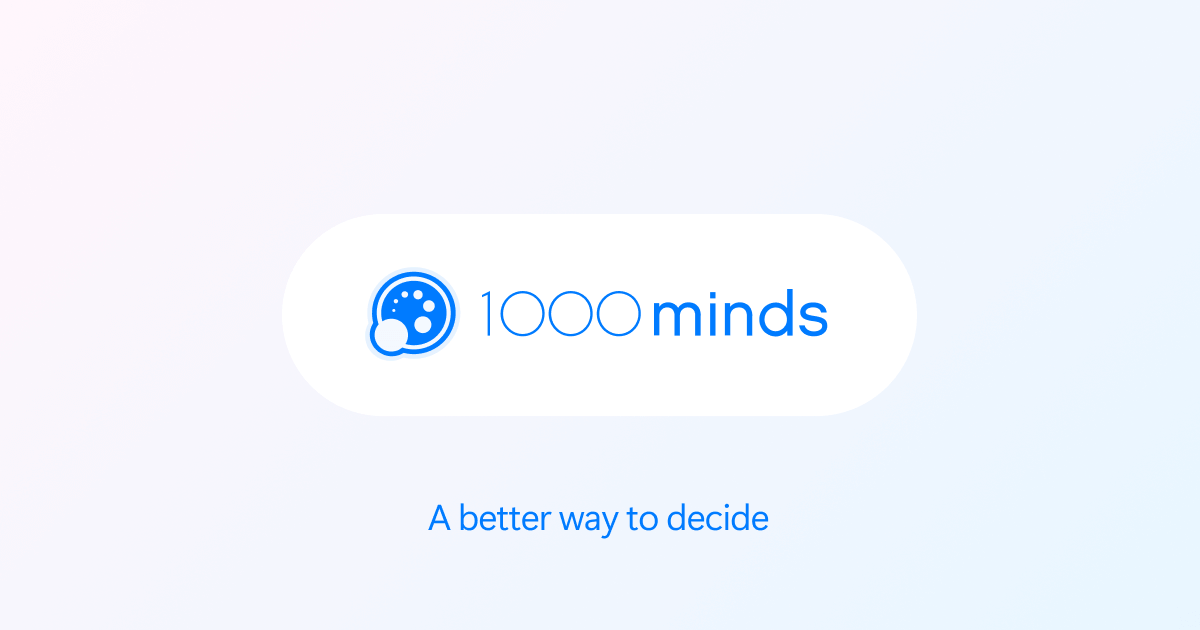Decisions are choices in life that take up a big chunk of our day-to-day personal growth and business development practices. They are cognitive processes resulting from a belief or course of action chosen among several alternative options.
Since decisions can either be rational or irrational, we can always take advantage of decision making tools. With formal decision-making methods and decision-making skills, such tools make every goal or objective easily attainable.
Today, we shall discuss the best digital products for streamlining a decision making process as listed in the following table:
| Features | ||||||||||||||
| Roadmaps | Decision Matrix | SWOT Analysis | Feasibility Study | Market Research | Cost-Benefit Analysis | Break-Even Analysis | Cause-and-Effect Analysis | Ishikawa Diagram | Pareto Analysis | Force Field Analysis | Blindspot Analysis | Decision Tree | ||
| Decision-Making Tool | ||||||||||||||
| Productboard | ● | ● | ○ | ○ | ● | ○ | ○ | ● | ○ | ○ | ○ | ○ | ○ | |
| airfocus | ● | ● | ○ | ○ | ● | ○ | ○ | ○ | × | ○ | × | × | ○ | |
| AppO | ○ | ○ | ● | ● | ● | ● | ● | ● | × | ● | × | × | × | |
| 1000minds | ● | ● | ○ | ○ | ● | ● | ● | ● | × | ○ | × | × | ○ | |
| FlowForma | ● | ○ | ○ | ○ | ○ | ● | ● | ● | × | ○ | × | × | ○ | |
| Sofvie | ● | ● | ● | × | × | × | × | ● | × | × | ○ | ○ | ○ | |
| Craft.io | ● | ● | ○ | × | ○ | ● | ○ | ○ | ○ | ○ | × | × | × | |
| ThinkTank | ○ | ● | ● | ○ | ● | ○ | ○ | ○ | × | ○ | ○ | ○ | ○ | |
| WinQSB | ● | ● | ○ | ○ | ○ | ○ | × | ○ | ○ | ○ | × | × | ○ | |
| Yonyx | ● | ○ | ○ | × | ○ | ○ | × | ● | ● | × | ○ | ○ | ● | |
| Cloverpop | ● | ● | ● | ○ | ○ | ○ | ○ | ○ | ○ | ○ | ○ | ○ | ● | |
| MakeItRational | ○ | ● | ● | × | × | × | × | ○ | × | × | ● | ● | × | |
| Polarity | ○ | ○ | ● | × | ○ | × | × | ● | × | ○ | ● | ● | × | |
| Zingtree | ● | ○ | ○ | × | ○ | ○ | × | ● | ● | × | ○ | ○ | ● | |
| Visyond | ○ | ● | ○ | × | ○ | × | × | ● | × | × | ○ | × | ○ | |
| Comparion | ○ | ● | ○ | × | ● | ● | ● | ● | ○ | ○ | × | × | × | |
| D-Sight | ● | ○ | ○ | ○ | ● | ● | ● | ○ | ○ | ○ | × | × |
Legend: Unapplicable: × ; Partial Operation: ○ ; Full Function: ●
17 Decision Making Tools to Consider
The following is a handpicked list of 17 digital products often used by business leaders to make key decisions daily:
1. Productboard

Productboard is a product management platform that simplifies a company’s decision making process. It features product and service roadmaps with task timelines, priority listings, customer insights, and app integrations.
These features make it an all-in-one tool for making data-driven product decisions by connecting existing tools and workflows and keeping stakeholders aligned and informed.
2. airfocus

Similar but more affordable than Prodcutboard, airfocus makes product management easy with a platform for making and prioritizing strategies and decisions. It also uses roadmaps and a portal for customer feedback and engagement.
3. AppO
AppO by Kepa Software can break down complex decisions into simpler, more actionable steps while analyzing multiple strategies, stakeholder insights, and expert opinions. This app can help you make better business decisions by eliminating emotion and bias and focusing on proven science and relative value.
4. 1000minds
With 1000minds, you can efficiently, fairly, and transparently make decisions involving multiple criteria. It is a decision-making application that enables you to discover what matters to people when making trade-off choices.
1000minds offers prioritization tools, value-for-money checks, and group decision-making features.
5. FlowForma Process Automation
FlowForma revolutionizes the traditional business process management space using automation and workflow products. FlowForma links workflows with decision-making and collaborative work management to facilitate business processes with speed and flexibility.
6. Sofvie
Some businesses need to focus on making decisions that facilitate and maintain their employees’ overall health and safety.
With Sofvie’s rich dashboards and tools, you can visualize your health and safety decision-making process. Track your goals, stay informed about initial decisions, and learn to make future decisions better.
7. Craft.io
Craft.io is a product management software that incorporates feedback capturing, planning, decision-making, and road mapping. It also integrates with many of the most commonly used online platforms today.
8. ThinkTank

ThinkTank is a next-gen digital engagement and teaming engine. It is a platform for group presenting, idea pooling, input voting, and, eventually, group decision-making.
It offers many templates, integrations, and collaborative components to help users ease into the decision-making process.
9. WinQSB
Compared to other software, WinQSB is one of the few open-source applications for business-oriented decision-making. It is free to download and use for Windows-based computers.
10. Yonyx
Yonyx lets you create knowledge-driven decision support applets for your organization’s members. Your operations teams can easily follow these applications to run consistent workflows and business processes.
11. Cloverpop
If you are looking for a complete decision intelligence platform, Cloverpop is one of the best options. Use it to learn, structure, collaborate, and activate artificial intelligence to improve business decision-making.
12. MakeItRational
Another software that transforms the way you make decisions is MakeItRational. It is an easy-to-use decision-making app that employs the analytic hierarchy process (AHP) decision science methodology.
This app can help you with project prioritization, strategic alignment, and collaborative decision-making.
13. Polarity
Polarity believes that disparate data, tools, and knowledge lead to bad decisions. For this reason, Polarity fuses all of these items into a single unified view without replacing your favorite tools.
14. Zingtree
With Zingtree, you can build interactive decision trees without building code from scratch like a programmer. It enables you to create agent scripts, manage internal processes, and guide customers.
15. Visyond
Like Zingtree, Visyond is a no-code, automated software for decision-making. However, it focuses on cause-and-effect analysis, scenarios, and Monte Carlo simulations.
You can get results and make informed decisions faster using just three easy steps. Import your spreadsheet, get predictive analytics, and confidently answer what-if questions.
16. Comparion
The Expert Choice Comparion AHP Software is a collaborative decision-making solution for structuring complex problems clearly and understandably. It enables users to accurately measure the importance of competing objectives and check for alternatives.
17. D-Sight Collaborative Decision-Making Tool
You might like the D-Sight Collaborative Tool if you’re looking for a decision-making platform that uses a highly intuitive interface run with the strongest mathematical power. This app takes account of all variables related to a decision and allows all involved experts to share their opinion.
Which Is the Best Decision-Making Tool?
Productboard is our top-rated option for the best business decision making tools among the products presented above. It is a customer-centric platform that helps businesses quickly bring the right products and services to market.
Use this product to understand what consumers need, prioritize what to create, and rally suppliers and users to virtual roadmaps. However, its entry-level price is slightly higher than airfocus, our next top recommendation. If you need the same cheaper and more customizable features, airfocus is the better option.
Decision Making Tools FAQs
1. What Is the Decision Making Process?
A formal decision-making process comprises identification, data collection, competitive analysis, action planning, implementation, and evaluation.
The formal decision making process begins with identifying a decision for a current situation. While a decision is almost always already in place, the process requires gathering information to identify decision alternatives.
Alternative solutions assessments and analyses occur so that an individual or team can choose the best action step from among the available options.
Companies can avoid a bad decision altogether with enough evidence about the decision steps. Especially with far-reaching executive decisions and long-term decisions, it is important to analyze possible outcomes before implementation. After each implementation, you can only make effective decisions if you evaluate their consequences.
Feedback is responsible for telling you where your decision plan falls short. Without any review of the consequences, future decisions can repeat the same mistakes and reduce your turnover of effective business decisions.
With this process, you can formulate complex decisions to achieve a target objective. Nevertheless, even quick decisions go through this entire process in a fast-paced approach.
2. What Is a Decision-Making Tool?
While the rudimentary pen and paper pair is the most simple tool for brainstorming and decision-making, a decision-making tool actually refers to computer software. Like task management software, decision making tools make internal and external business processes easier.
Decision making tools can help you map out the outcomes of a decision and its possible alternatives. With them, eventual actions or courses of action are data-driven, and creative solutions take flight.
Decision tools help reduce the degree of risk resulting from decision-making errors, as they encourage shared decision-making among colleagues. In addition, these applications help filter out mundane decisions from hundreds of decisions formulated in the workplace daily.
Types of Decision-Making Tools
Before computer software applications combined several analysis templates into consolidated platforms, decision-making science evolved from centuries of human decision processes.
The following decision-making techniques are just a few of the informed decision making tools as proven by business leaders:
- Roadmaps
Decision roadmaps are the most straightforward tools anyone can use to make a final decision. They help individuals and teams to sequence choices and learn or predict events. Roadmaps can be used for marketing, strategy formulation, vision creation, and product or service invention.
- Decision Matrix
A decision matrix is a list of values in rows and columns that enables a decision-making agent to rate the relationships between values. Other names for decision matrices are Pugh matrices and decision grids.
Decision matrices become very useful when an analyst needs to come up with a single choice from an extensive list of options.
- SWOT Analysis
Strength, Weakness, Opportunity, and Threat (SWOT) Analysis is a framework that commonly applies to strategic planning and eventual decision-making. It assesses both internal and internal factors and current and future probabilities.
- Feasibility Study or Market Research
Market research refers to data gathering practices involved before making any entrepreneurial decisions. It analyzes the availability of potential customers, the current market state, and the competition’s capabilities.
On the other hand, feasibility studies are broader tools than simple market research. It considers comprehensive financial analysis for whether a product or service can meet certain profits.
- Cost-Benefit Analysis
Using the cost-benefit analysis method, you will choose decisions where the benefits outweigh the costs. This technique emphasizes the assessment of all costs involved in financial decisions.
- Break-Even Analysis
Break-even analysis is another financial tool that looks at the costs of a new decision for a business, service, or product. This tool weighs the cost against a unit sell price to determine at which point the decision breaks even.
- Cause-and-Effect Analysis
The cause-and-effect technique is one of the most basic decision analysis tools you can use to identify the likely outcomes of every decision.
With a list of possible outcomes, you can find and fix the root cause of each problem the first time around. Additionally, you can resolve any future risks with the problem averted during its first occurrence.
- Ishikawa Diagram
An Ishikawa diagram is a type of cause-and-effect diagram with a fishbone or herringbone structure. It primarily shows all the potential causes of a single specific event.
Nonetheless, Ishikawa diagrams can be very helpful for listing all the steps that could lead to accomplishing one particular decision. However, this diagram does not easily show the interrelationships between the required action steps.
- Pareto Analysis
Joseph Juran coined the Pareto analysis technique from Vilfredo Pareto’s research on the 80-20 rule. This rule states that the top 20 percent of a country’s population accounts for about 80 percent of a country’s wealth.
Juran adapted this rule for use in business as he observed that most production defects result from a small percentage of root causes.
Juran’s work implies that focusing on the top 20 percent of root causes will greatly impact outcomes with very minimal effort. The Pareto analysis can be very helpful in a range of decision processes because it can narrow down options to optimal decisions.
- Force Field Analysis
Force field analysis is an effective tool for making go or no-go decisions. It stems from the belief that an equilibrium between driving and resisting forces maintains events and situations.
The resistive forces should get weaker, or the driving forces should become stronger for a decision to push through.
- Blindspot Analysis
Decision blindspots are dangerous, incorrect, outdated, and incomplete assumptions that inhibit the success of a decision-making process. Blindspot analysis helps identify and remove blindspots for effective strategic decision-making.
3. What Are the Advantages of Using Decision Tools in Decision Making?
Decision tools based on artificial intelligence algorithms combine and extract information from multiple sources so that decision-making agents can come up with the right decisions faster.
Furthermore, since the decision support tool analyzes data for the user, it also improves decision effectiveness.
4. What Tools Can Be Used for Decision-Making?
Aside from the 11 techniques previously mentioned, you can also use decision trees and decision-making diagrams or flowcharts. These tools are the most common software devices employed by Yonex and Zingtree.
5. What Can Decision Trees Be Used For?
Decision tree diagrams are useful for mapping the possible outcomes that can stem from a single decision. It is an effective way of handling non-linear data sets.
Each tree represents a particular decision situation where each branch shows all the factors relevant to the decision.
6. Is a Decision Tree a Flowchart?
In essence, a decision tree is a specific type of flowchart or decision making diagram. However, while a flowchart can go in circles or cycles, a decision tree branches out all possible outcomes from a root cause.
7. What Is the Limitation of Decision Trees?
Decision trees are largely unstable compared to other decision analyzers. Any small change in the data can cause a drastic change in the flow of consequences and results.
As such, a decision tree is far less effective in outcome prediction than a decision matrix. Nevertheless, shared decision making tools can make good use of decision trees for a simple rendition of a particular decision’s probable outcomes.















